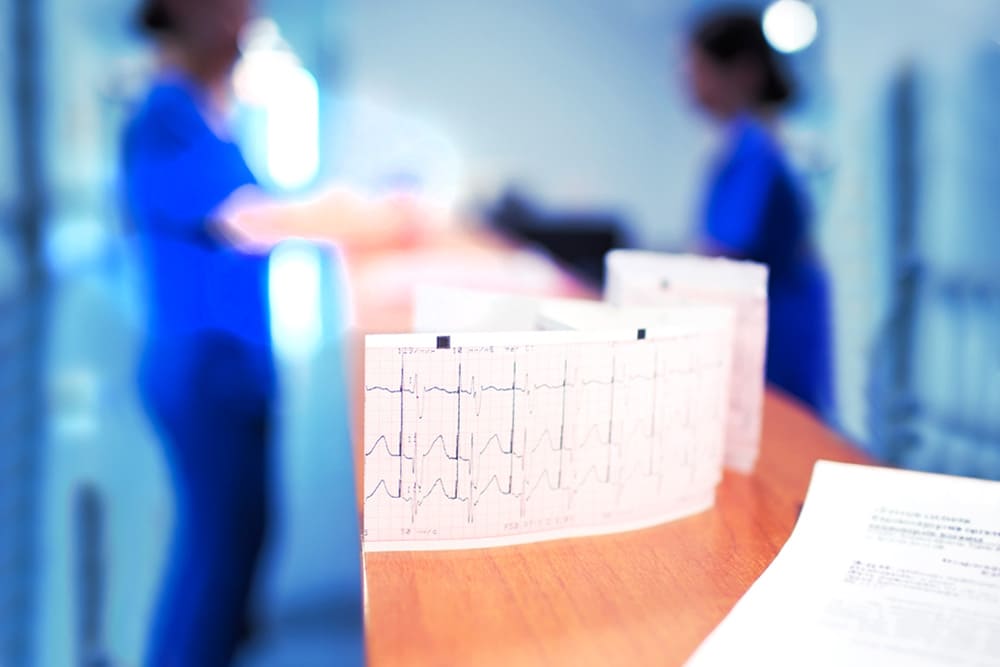


When you have a scheduled treadmill stress test (also known as TMT), there may be a temptation to browse the Internet to see what is a positive test result and what is a negative one.
But self-evaluation of treadmill stress tests is not recommended because it requires specialized medical training to interpret the results correctly.
Lay persons are not as trained as doctors are to monitor heart rate and blood pressure during exercise or accurately identify any abnormalities or symptoms that may indicate an underlying heart condition.
Doctors often may not even reveal to patients what specifics they read in the test results and generally say whether the result was good or not. But you must trust that your doctor will know precisely what further tests or treatment to give you to remedy your problems effectively.
With that idea understood, let’s broadly see what results a completed test can show.
Assuming your doctor has discussed whether or not you are fit enough to take a stress test and how to get ready to pass your test, your doctor will likely consider these factors when setting up your test to get accurate results.
If you’ve given a proper test, following the correct procedure, here are 8 things that a stress test can show your doctor:
A TMT provides an overall assessment of the health of your heart by evaluating its ability to respond to physical activity and stress. During the test, the heart is monitored for any abnormalities in its function or rhythm.
If you have illnesses such as obesity, cholesterol, diabetes, and hypertension – or hereditary factors – they can all combine and have a multiplicative effect on the heart.
Before the test, let your doctor know about your ailments and how you are managing them – through foods to avoid with diabetes, high blood pressure treatment, a diet to lower cholesterol, or a plan to reduce obesity.
During the test, as you walk on the treadmill, the intensity of the exercise will gradually increase until you reach a target heart rate.
As your heart rate and blood pressure increase, your heart must work harder to pump blood to your muscles, and any underlying issues with your heart may become more apparent.
According to Healthline, “Doctors are specifically looking at your vital signs for ischemia, or poor oxygen and blood flow to the heart.”
Abnormal heart rhythms can occur when the electrical signals that regulate the heart’s pumping action become disrupted or irregular.
During the test, electrodes are placed on your chest to monitor your heart’s electrical activity. If any abnormal rhythms or arrhythmias occur during exercise, they will be detected by the monitoring equipment.
The test can also help determine the underlying cause of any arrhythmias or abnormal rhythms, such as a structural problem with the heart, a previous heart attack, or an imbalance in the body’s electrolytes.
The coronary arteries supply oxygen and nutrients to the heart muscle, and if these arteries become narrowed or blocked, blood flow to the heart may be reduced or cut off entirely.
If there are blockages or narrowing in your coronary arteries, the reduced blood flow may become apparent during exercise, when the heart needs more oxygen and nutrients. The test can also help identify the location and severity of any blockages or narrowing, which can guide further testing or treatment options.
But there is one caveat here.
According to Harvard Health Publishing, it is essential to know that a normal stress test can’t rule out the chance that a plaque will later block an artery. Stress testing only detects severely narrowed arteries (70% or more), whereas heart attacks could often result from lesser blockages.
During the test, your heart rate will gradually increase as you walk on the treadmill, and the intensity of the exercise increases. Your maximum heart rate is the highest you can achieve during the test, a key indicator of your heart’s health and fitness level.
After the test, your heart rate will gradually decrease as you cool down. The speed at which your heart rate returns to normal can also indicate your overall cardiovascular health. If your heart rate returns to normal quickly, it may suggest you are in good cardiovascular shape.
As you walk on the treadmill, your heart rate and blood pressure will increase to meet the exercise demands. Your body will also require more oxygen to meet the increased needs of your muscles.
The test can help identify any abnormalities in your blood pressure response, such as increased blood pressure greater than expected for your activity level. The test can also show how much air you breathe in and out, and the oxygen levels in your blood, to evaluate how well your lungs can supply oxygen to your body during physical activity.
According to Cleveland Clinic, if you have any symptoms such as chest pain, shortness of breath, or dizziness during exercise, they may or may not be due to an underlying heart condition.
During the test, your heart rate, blood pressure, and breathing are monitored, and you will be asked about any symptoms you experience. Your doctor can use this information to evaluate whether the cause of your symptoms is related to a heart condition, and determine what treatment you may need.
A treadmill stress test can provide information about your heart rate, blood pressure, breathing, blood flow to the heart muscle, and any underlying heart conditions.
According to Salynn Boyles, writing in WebMD, if your test results show signs of decreased blood flow to the heart, abnormal heart rhythms, or other cardiovascular issues, you may be at a higher risk for developing heart disease in the future.
A treadmill stress test is a valuable tool in assessing the health of your heart and identifying any underlying heart conditions. It is important to approach the test positively and trust your doctor’s ability to interpret the results and provide appropriate guidance and treatment. Stay heart-healthy. Be a Zinda Dil.